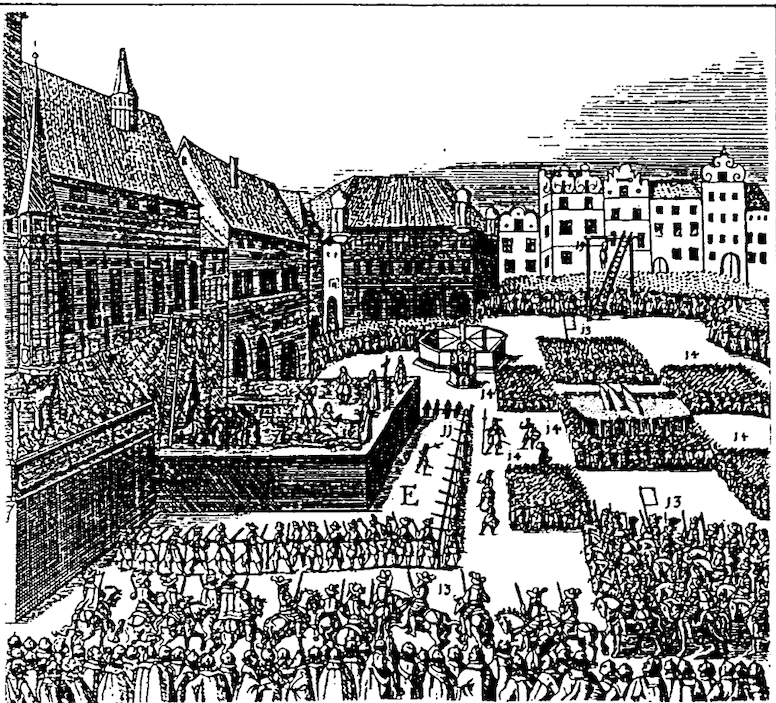Díky 
20.6. 1621 27 participants in the uprising sentenced to death
Categories: Personalities , Years of war and revolution , Calendar

As early as 18 June 1621, a wooden execution scaffold covered with black cloth began to be erected on Old Town Square in Prague, right next to the Town Hall. The execution of 27 representatives of the Estates Opposition took place three days later. Throughout the execution, trumpets and drums were sounded.
The Battle of White Mountain marked the end of the Czech Estates uprising. The demoralised Estates army was still disintegrating during the battle, and there was no will to defend the walls of Prague against the victorious troops. Frederick the Great left Prague the day after the battle, taking temporary refuge in Vratislav in Silesia, but leaving for the Netherlands in December 1620, he left the Czech lands forever. Some of the leaders of the noble resistance accompanied him, but most of the Estatespoliticians remained in Bohemia, apparently hoping that the emperor's retribution for the rebellion would be mild. After the victorious troops entered Prague, there were several looting and pillaging in the city.
In Vienna, the victory of the Catholic troops was celebrated, for Emperor Ferdinand II. and the Viennese court, the defeat of the Bohemian Estates meant above all the necessity to decide what to do with the lost and now recharged lands. "The first measures after the defeat of the Estates' rebellion were aimed at consolidating the monarch's power and punishingJaroslav Pánek and Oldřich Tůma write in their book History of the Czech Lands.
In the spring of 1621, an investigation and subsequent grand trial of the Estates politicians, active participants in the uprising, took place in Prague. First, those politicians who had gone into exile in time were sentenced to death, loss of honour and confiscation of all their property. The harsh sentences showed that other statist politicians who had not shown sufficient foresight to remain in the country in time could not count on pardon. The final verdict was indeed merciless - over forty persons in all were sentenced to death on June 20.
Although some sentences were commuted, the execution of 27 leaders of the Estates Opposition took place on 21 June 1621 in Prague's Old Town Square. "With the execution, which was conceived as a great Baroque spectacle, Ferdinand II made it clear to the whole of Europe that he was firmly in control of the Bohemian lands. In relation to the domestic environment, these executions were primarily of a deterrent nature. In many cases, the choice of victims did not correspond to their actual contribution to the uprising," add Jaroslav Pánek and Oldřich Tůma.
Among the victims were 3 lords (Kryštof Harant from Polžice and Bezdružice, Václav Budovec from Budovo and Jáchym Ondřej Šlik), 7 knights and 17 townsmen. On June 18, a wooden execution scaffold covered with black cloth began to be erected on Old Town Square in Prague, right next to the town hall. The convicts were brought to the Old Town Hall from the castle on Sunday evening, 20 June. The day of the horrific execution was announced at 5 a.m. on Monday, 21 June 1621, by a shot from the cannon at the castle. The city gates were closed and scaffolding surrounded Wallenstein's regiment. Moreover, throughout the execution, trumpets and drums were sounded so that the people would not hear what the condemned were saying. The order of executions was determined according to rank, i.e. first three members of the nobility were executed by beheading and then seven knights," describes historian Jan Kumpera.
Jaroslav Pánek and Oldřich Tůma, History of the Czech Lands, Miroslav Buchvaldek, History of Czechoslovakia in Data, www.magni.cz
The article is included in categories:



